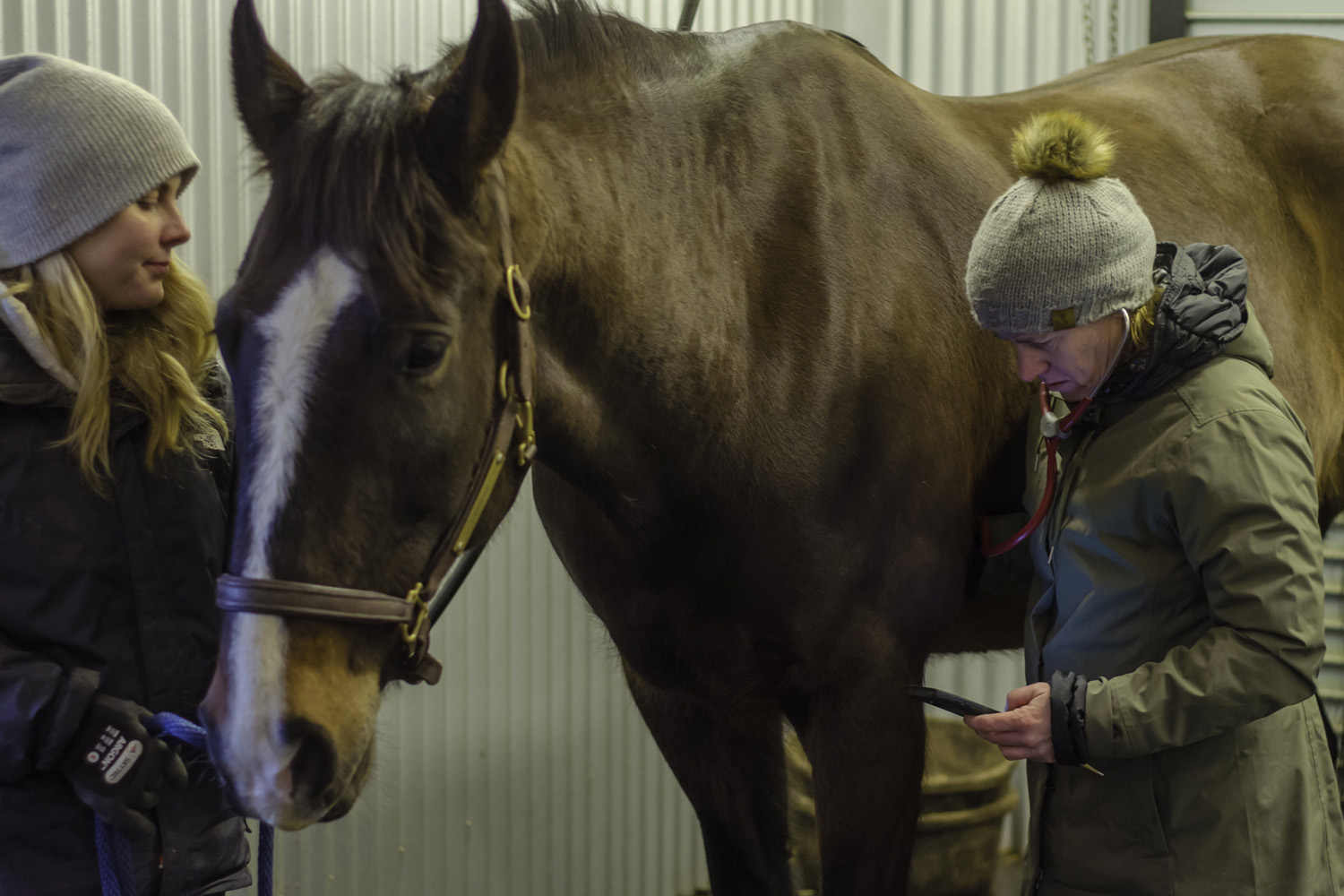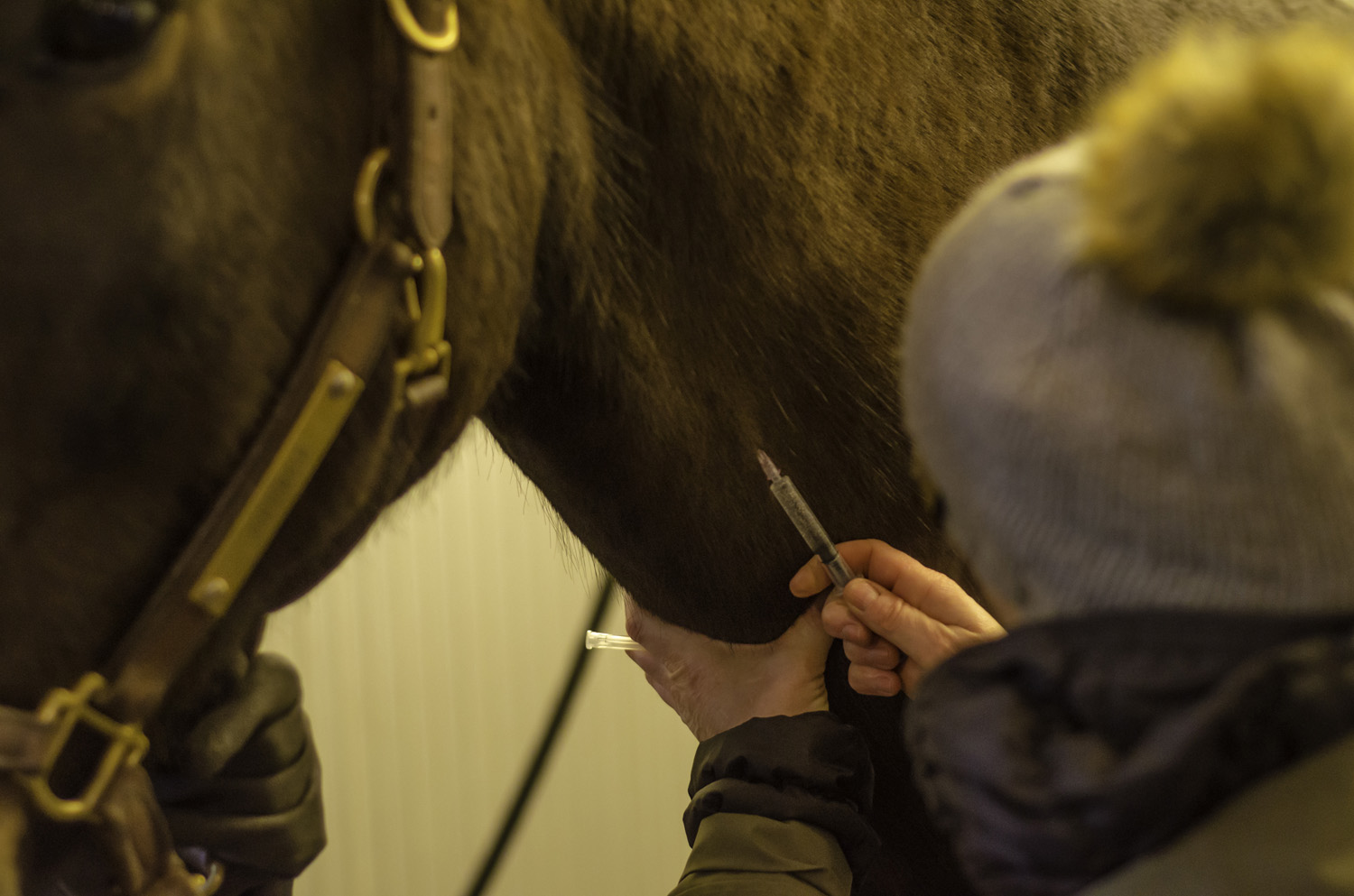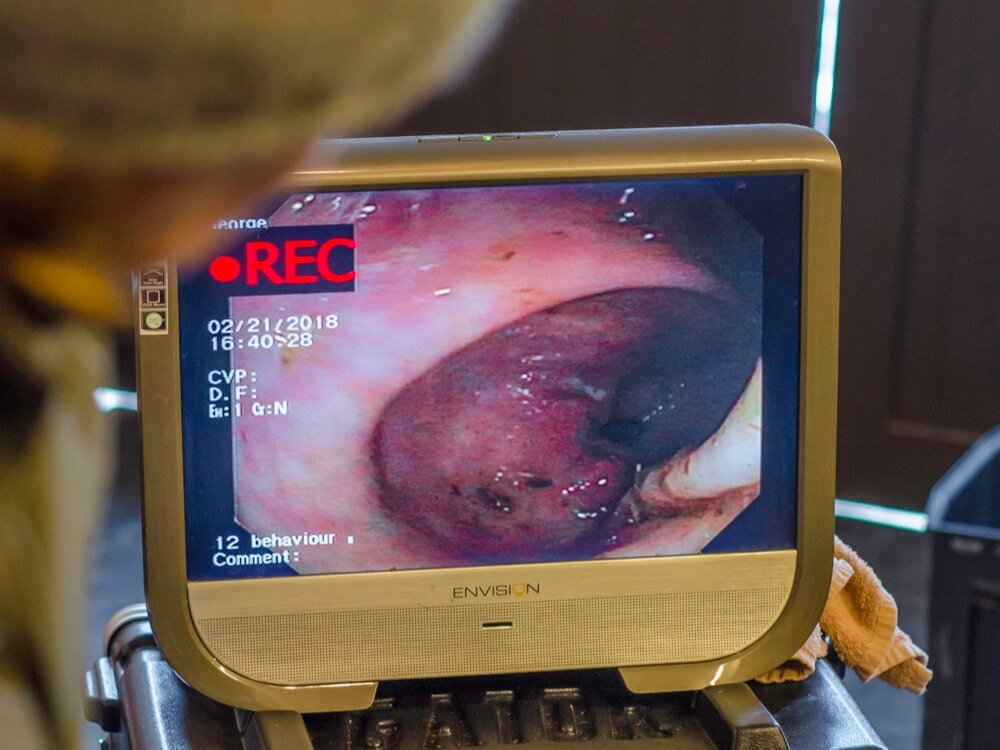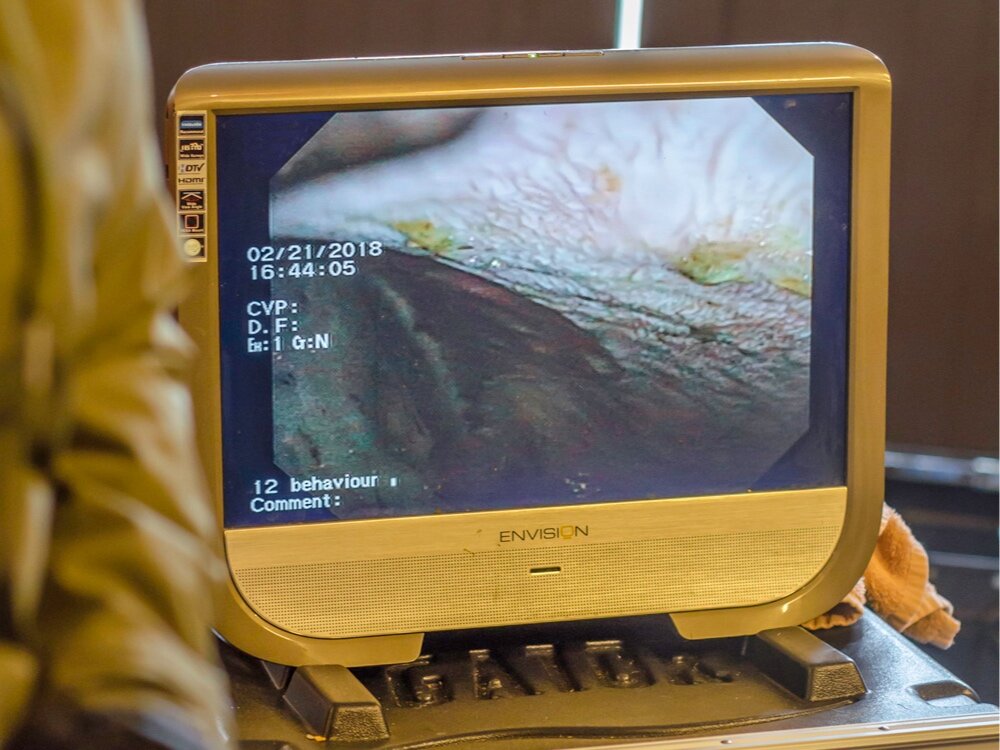MLEC SERVICES







Referral Services
At Meadow Lane Equine Clinic we went to ensure your horse receives the best veterinary care possible. If your horse requires advanced diagnostic imaging, surgery or hospitalization, we will ensure that you are referred to the appropriate specialist. We will work closely with the clinician monitoring your horse’s case to ensure the continuity of veterinary care before and after referral. Some of the procedures that we refer our patients for include:
• Ophthalmology & Dermatology
• Gastroscopy
• Upper airway endoscopy
• Standing or anaesthetized MRI
• Extensive dental extractions
• Hospitalization for medical management of colic
• Colic surgery
• Arthroscopic surgery
• Stem cell collection and processing
Equine GASTRIC ULCER SYNDROME
In the past few years equine gastric ulcer syndrome has gained greater recognition as an important condition affecting both our performance and recreational equine partners. In this condition, the mucosa of the lower esophagus, stomach and upper duodenum (small intestine) become eroded or ulcerated. There are two types of mucosa in the stomach, a squamous portion and a glandular portion and depending on the location of these ulcers, a different approach and length of treatment may be required to resolve them. The location and severity of gastric ulcers is best determined by gastroscopy, where an endoscopic camera is passed down the esophagus into the stomach. A number of factors contribute to the development of ulcers in horses. Some of the primary risk factors include the dietary management and husbandry of many domestic horses. This includes low forage/high grain diets, intermittent feeding, and stressors such as lameness, trailering, or changes in herd dynamics. A variety of clinical signs can be observed in this condition, such as reduced performance, misbehavior, or a change in demeanor.
Equine gastric ulcer syndrome is an important condition that commonly affects both our performance and recreational equine partners. There are two types of mucosa in the stomach, a squamous portion and a glandular portion. These regions of the stomach are divided by a junction called the margo plicatus. The most common area for gastric ulcers to develop is on the squamous portion of the stomach, near the margo plicatus. Gastric ulcers can also occur in the glandular portion of the stomach, especially near the pylorus (exit of the stomach). In the affected horse, the acidity of the stomach overrides the protective mechanisms of the mucosa and the epithelium becomes eroded and eventually ulcerated.
The risk factors for development of equine gastric ulcer syndrome continues to be investigated by researchers. One of the largest risk factors for our horses is athletic performance and even recreational use. One study revealed that up to 90% of racehorses were affected by gastric ulcers. Another study found that up to 60% of performance and recreational horses were affected. Other identified risk factors include high concentrate and low forage diets, and interrupted feeding schedules leading to periods of fasting. In a nutshell, these risk factors increase the exposure of the mucosa to gastric acids and/or reduce the protective mechanisms, such as the acid buffering capacity, of the stomach.
So how would you know if your horse is affected by equine gastric ulcer syndrome? The clinical signs of this syndrome are notoriously vague and often this condition is diagnosed when other diagnostics yielded no results. Even low grade ulcers can cause your horse pain and discomfort. How this discomfort manifests in horses varies greatly depending on the severity of the lesions and the individual character of the horse. Changes in behaviour or a history of misbehaviour are commonly cited. Sensitivity to palpation of the girth area or “girthiness”, irritability under saddle, and resistance to perform can also be observed. A reduced appetite, teeth grinding, and poor body condition are also common clinical signs. Gastric ulcers can also be a cause of intermittent, low grade colic. Affected horses often present with a history of frequent bouts of colic that respond to medical management on the farm or in the hospital.
Equine gastric ulcer syndrome can be definitively diagnosed through gastroscopy, or endoscopic examination of the stomach. In this procedure, the horse undergoes standing sedation, and an endoscopic camera is passed down the horse’s esophagus into the stomach. The horse is held off of feed and water to ensure that the stomach is as empty as possible. The camera can then be maneuvered around the stomach and esophagus to examine the mucosa and identify any erosions or ulcerations. The severity of the lesions can be graded and their chronicity can be determined. In severe cases, a follow-up gastroscopy may be warranted to evaluate the effectiveness of treatment before it is discontinued. We typically work with Dr. Debbie Parsons, an equine internal medicine specialist, who perform the gastroscopy and guides treatment.
The mainstay of treatment for equine gastric ulcer syndrome is an oral medication called “Gastrogard” in which the active ingredient is omeprazole. This medication is a proton pump inhibitor, which in effect reduces the production of acid by the stomach, thereby making it less acidic. This reduces the incidence of new ulcers developing and promotes healing of those already present. The typical recommendation for squamous ulcers is a 4 week course of treatment at a full dose of Gastrogard daily. For horses with glandular ulcers, typically a 6 – 8 week course of treatment of Gastrogard is required. Ideally the horse is re-evaluated near the end of this period to assess their response to treatment. Depending on the horse’s response, chronic administration of Gastrogard at the maintenance dose may be recommended. This may not be necessary for all horses, and some horses may be managed well with husbandry changes alone or with preventative treatments during stressful events. Other medications, such as sucralfate, may also be employed in the treatment of gastric ulcers, especially if they are located in the glandular portion of the stomach. Sucralfate is an oral medication that is designed to coat damaged mucosa in the esophagus and stomach, and may help speed the healing of ulcers that are present.
By understanding the risk factors for developing gastric ulcers, we can alter the management of our horses in an effort to reduce their incidence. Feeding diets that are primarily forage based with as few concentrates as possible is optimal. In addition, mimicking the horse’s grazing feeding pattern by either offering grass turn out, slow feeder hay nets, or more frequent feedings, can all help reduce your horse’s risk for developing ulcers.
If you are concerned that your horse may be suffering from gastric ulcers, contact our clinic today for a consultation!
